The Climate Crisis Gets a High-Tech Ally: 5 Surprising Ways AI Is Fighting Climate Change. From Hunting Methane Leaks in Space to Cleaning Ocean Plastic—How Artificial Intelligence Became Our Most Unexpected Climate Weapon.
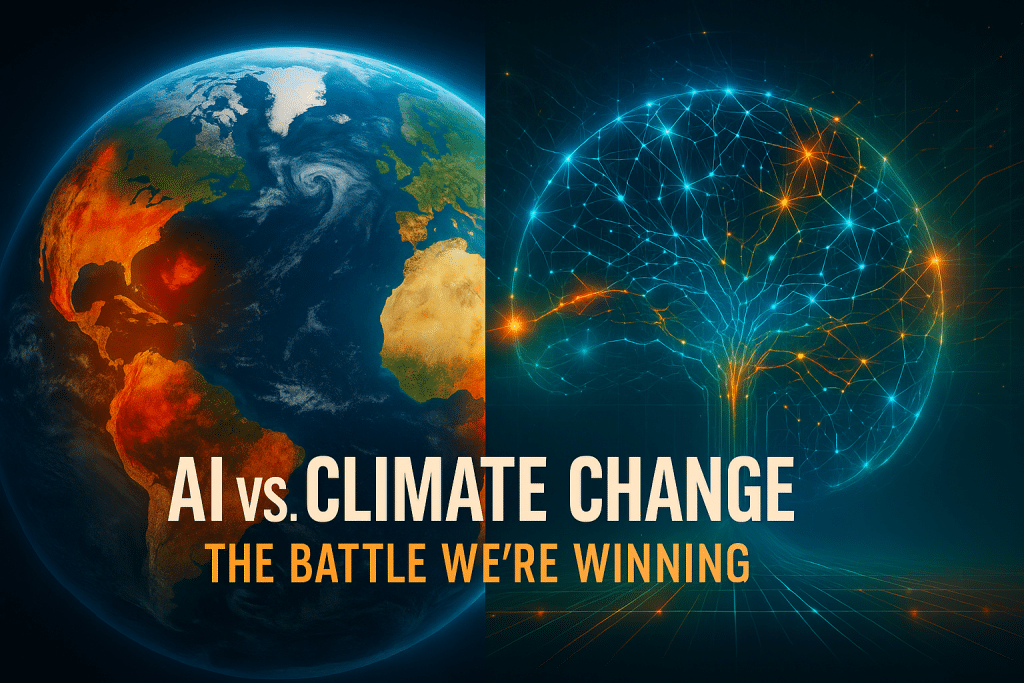
October 12, 2025 As wildfires rage across continents, sea levels creep higher, and extreme weather events become our new normal, we’re witnessing a surprising plot twist in the fight against climate change: artificial intelligence is emerging as one of our most powerful weapons against the greatest challenge humanity has ever faced.
While AI often makes headlines for chatbots and self-driving cars, a quieter revolution is unfolding. From satellites hunting invisible methane plumes 400 miles above Earth to algorithms making waste management 86 tonnes more efficient per facility, AI is tackling climate change in ways that would have seemed like science fiction just a few years ago.
“AI has the potential to ‘supercharge’ climate action,” according to the United Nations Framework Convention on Climate Change. With nearly 4 billion people already living in areas highly vulnerable to climate change, according to the World Health Organization, we need every tool we can get—and AI is proving to be surprisingly effective in unexpected ways.
Let’s explore five surprising applications where artificial intelligence is making a real difference in the fight against our warming planet.
- 1. Space-Age Methane Hunting: AI Satellites Track the Invisible Enemy
- 2. Antarctic Ice Watchers: AI Maps Icebergs 100x Faster Than Humans
- 3. The Waste Revolution: AI Recovers 86 Tonnes Per Facility That Would Hit Landfills
- 4. Ocean Plastic Hunters: AI Boosts Cleanup Efficiency by 60%
- 5. Disaster Prediction: AI Forecasts Where Climate Chaos Will Strike
- The Bigger Picture: AI's Climate Impact by the Numbers
- The Path Forward: What We Need to Do Next
- A Cause for Cautious Optimism
- Frequently Asked Questions: AI Fighting Climate Change
1. Space-Age Methane Hunting: AI Satellites Track the Invisible Enemy
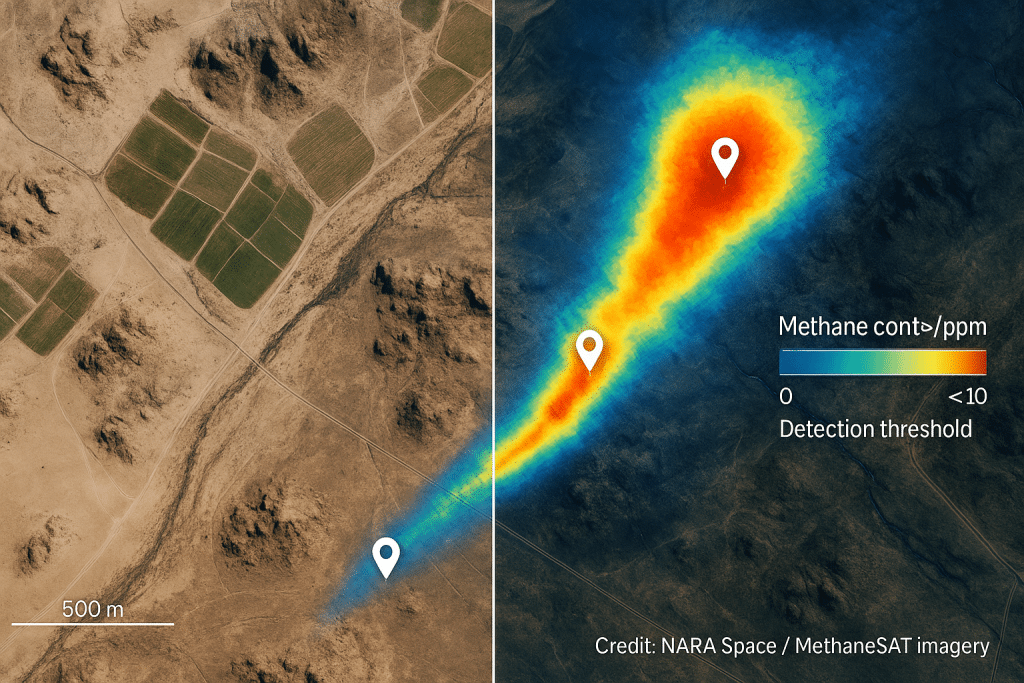
Here’s something we bet you didn’t know: methane is responsible for about 30% of global warming and has a global warming potential 82 times higher than CO2 over a 20-year period. The catch? It’s invisible, odorless, and incredibly difficult to detect—until now.
Satellites equipped with AI are revolutionizing how we track this super-pollutant. The technology combines Earth observation with AI-driven analytics to identify methane leaks from oil and gas operations, agriculture, and waste management facilities with unprecedented accuracy.
“You can’t manage what you can’t measure,” says NARA Space CEO, highlighting a problem that has plagued climate action for decades. The data gap around methane emissions has made mitigation strategies nearly impossible to implement effectively. Without knowing where leaks are occurring, how can we fix them?
The Technology in Action
AI algorithms analyze vast amounts of satellite data to detect methane plumes that would be impossible for humans to spot manually. The system can:
- Identify leak sources within specific facilities or geographical areas
- Quantify emission rates with remarkable precision
- Alert operators to problems in near real-time
- Track changes over time to verify mitigation efforts
The UN’s Methane Alert and Response System (MARS) is already using this technology to flag emissions and transform them into actionable enforcement mechanisms. In the United States, a new methane emissions fee that started at $900 per metric ton in 2024 will increase to $1,500 by 2026—giving companies powerful financial incentives to use AI-powered detection to find and fix leaks.
Why This Matters
Methane’s short atmospheric lifespan of about nine years means that reducing emissions delivers rapid climate benefits. According to the Intergovernmental Panel on Climate Change, cutting methane is one of the most effective tools for near-term climate action. AI makes this reduction measurable, verifiable, and scalable in ways that were simply impossible before.
2. Antarctic Ice Watchers: AI Maps Icebergs 100x Faster Than Humans
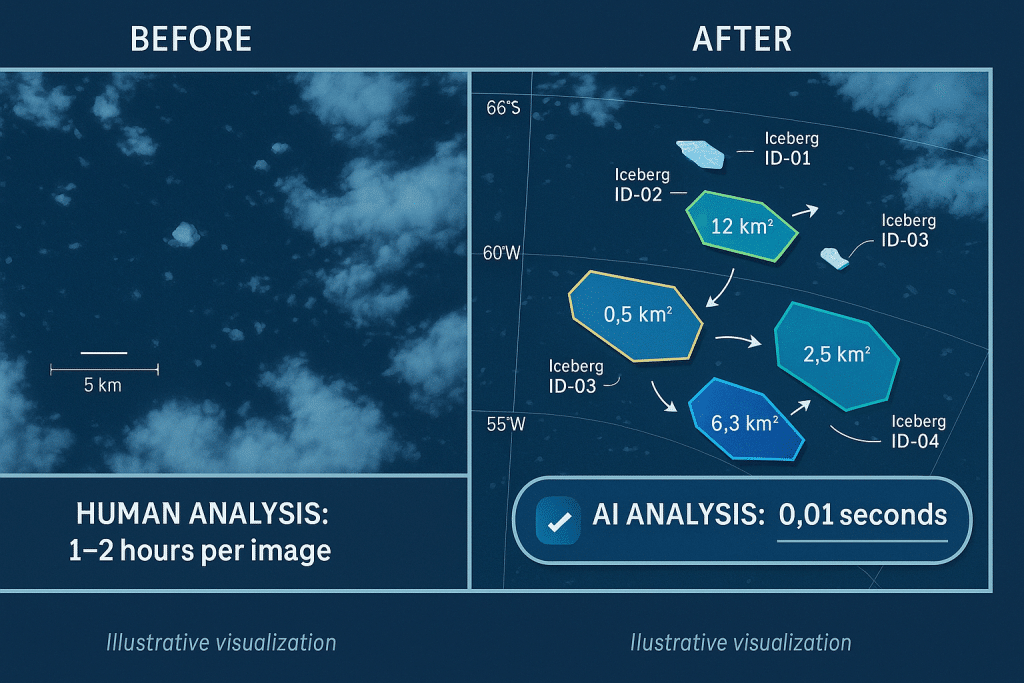
In the frigid waters of Antarctica, a silent crisis is accelerating. Massive icebergs are breaking off from ice shelves at increasing rates as climate change warms the atmosphere. Understanding this process is crucial for predicting sea level rise—but there’s a problem: identifying and tracking icebergs is incredibly tedious work for humans.
Enter AI.
Scientists at the University of Leeds in the United Kingdom have developed an AI system that can map large Antarctic icebergs in satellite images in just one-hundredth of a second, according to the European Space Agency. For human researchers, this same task is lengthy and time-consuming, often taking hours per image. Worse, it’s extremely difficult to distinguish icebergs from the white backdrop of clouds and sea ice.
The Impact on Climate Science
This AI breakthrough enables researchers to:
- Track iceberg movement across vast oceanic distances
- Measure meltwater release into the ocean with precision
- Understand acceleration patterns as climate change progresses
- Predict sea level rise more accurately
The data gathered helps scientists understand how much meltwater these massive ice structures release—a process that’s accelerating as our atmosphere warms. This information is critical for coastal communities worldwide planning for rising seas.
“We’re talking about processing data that would take human researchers decades in just days or weeks,” explains one researcher involved in the project. The speed advantage isn’t just convenient—it’s essential for keeping pace with rapid changes in polar regions.
3. The Waste Revolution: AI Recovers 86 Tonnes Per Facility That Would Hit Landfills
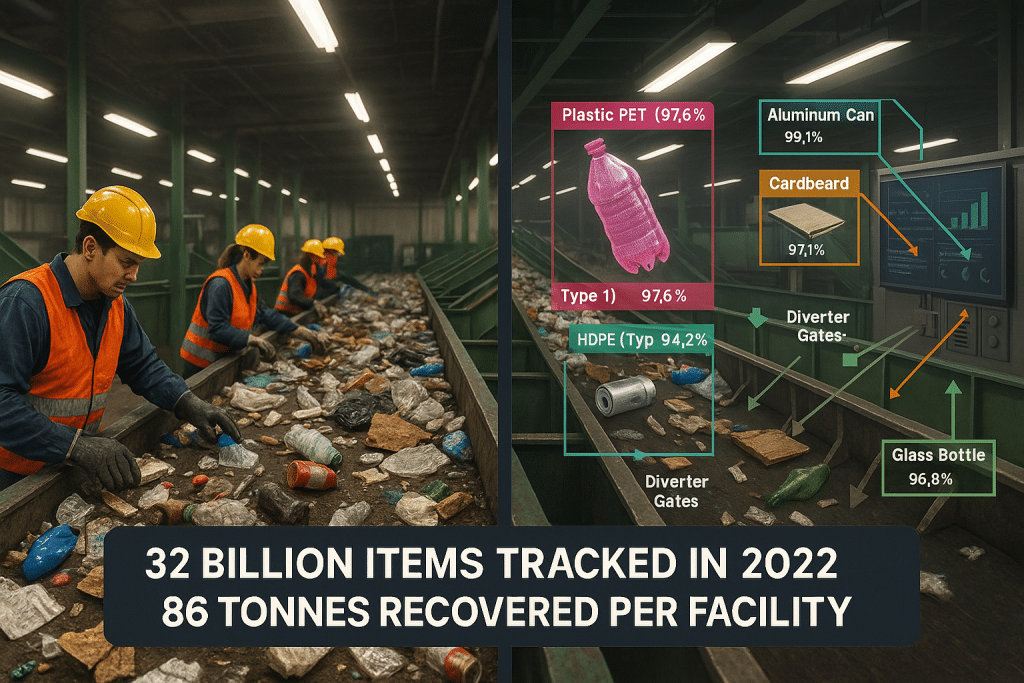
Here’s a surprising fact: waste management is responsible for 16% of global greenhouse gas emissions, primarily through methane production from landfills. We’re literally creating a climate problem by throwing things away.
Greyparrot, a London-based software startup, has developed an AI system that’s changing this equation dramatically. Their technology analyzes waste processing and recycling facilities to help recover and recycle material that would otherwise end up in landfills producing methane.
The Numbers Are Staggering
In 2022 alone, Greyparrot’s AI system:
- Tracked 32 billion waste items across 67 different waste categories
- Identified an average of 86 tonnes of recoverable material per facility
- Operated in numerous facilities across multiple countries
- Provided real-time insights to optimize sorting processes
The AI uses computer vision to identify items moving through waste streams at speeds impossible for human sorters. It can distinguish between different types of plastics, identify recyclable materials in complex mixed waste, spot contamination that would ruin recycling batches, and provide facility managers with data to continuously improve operations.
Why Traditional Recycling Falls Short
Human sorters, no matter how skilled, can’t match AI’s speed and accuracy. We make mistakes, get tired, and can’t process the sheer volume of waste our society generates. AI systems work 24/7, never fatigue, and actually improve over time as they process more data.
The environmental impact is substantial. Every tonne of waste diverted from landfills means less methane production, reduced need for virgin materials, lower carbon emissions from manufacturing, and decreased pressure on already overflowing waste sites.
“We’re turning waste management from a necessary evil into a climate solution,” says a Greyparrot spokesperson. The company’s vision: zero waste reaching landfills through intelligent sorting.
4. Ocean Plastic Hunters: AI Boosts Cleanup Efficiency by 60%
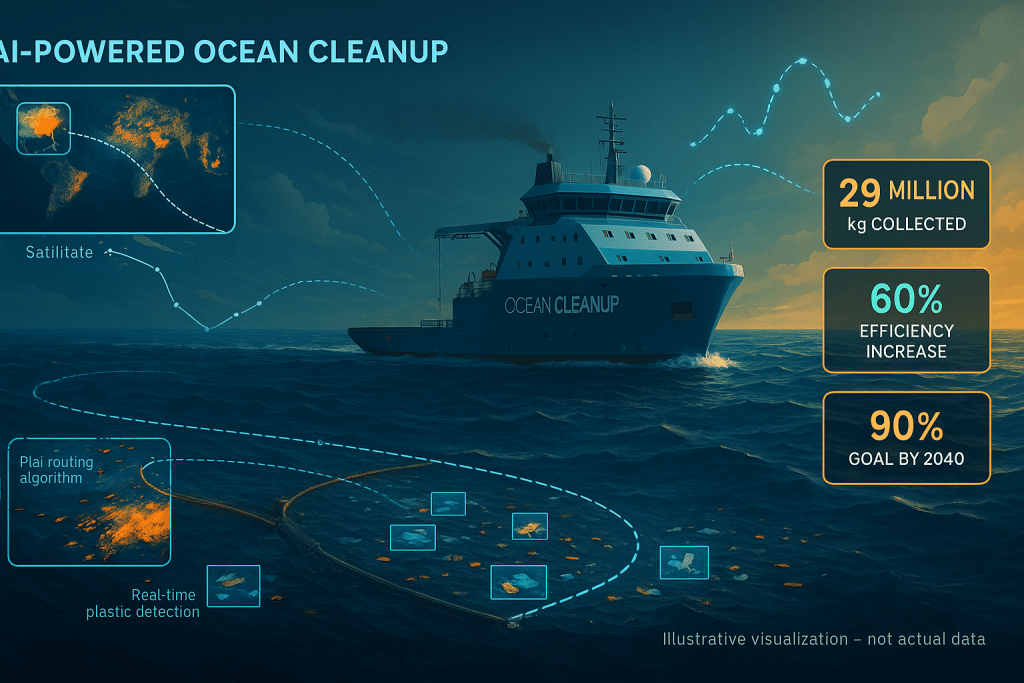
The Great Pacific Garbage Patch—a swirling mass of plastic debris twice the size of Texas—has become a symbol of our ocean pollution crisis. Recent research reveals it’s not just an eyesore; it’s actually impeding the ocean’s ability to regulate climate while harming marine life and creating microplastics that enter our food chain.
The Ocean Cleanup, a Netherlands-based environmental organization, is using AI to tackle this massive problem in surprisingly effective ways. In July 2025, they announced a collaboration with Amazon Web Services to leverage advanced AI, machine learning, and cloud computing to accelerate their ambitious goal: remove 90% of floating ocean plastic by 2040.
AI Makes the Impossible Possible
Recent published research revealed how AI-driven algorithms are dramatically accelerating plastic waste removal:
- 60% efficiency increase in plastic collection without raising costs
- Optimal routing algorithms that identify best collection paths in dynamic marine environments
- Object detection AI that creates detailed maps of ocean litter in remote locations
- Real-time analysis of ocean conditions, currents, and plastic concentration
The AI system rapidly processes satellite imagery, oceanographic data, and real-time vessel information to determine where cleanup ships should go next. It’s like having a constantly updating treasure map—except we’re hunting garbage instead of gold.
As of June 2025, The Ocean Cleanup has collected over 29 million kilograms (63.9 million pounds) of trash from aquatic ecosystems worldwide. With AI supercharging their operations, they’re on track to dramatically accelerate that pace.
The Climate Connection
You might wonder: how does cleaning plastic help climate change? The connections are more significant than we initially realized:
- Plastic production accounts for 3.4% of global greenhouse gas emissions
- Plastic degradation in oceans releases methane and ethylene
- Ocean health affects the planet’s ability to absorb CO2
- Ecosystem disruption from plastic impairs natural carbon cycling
“AI and operations research aren’t just for finance or tech—they can actively solve environmental challenges,” says Jean Pauphilet of London Business School, who worked on the routing algorithms. “With smarter analytics, we can get closer to a plastic-free future.”
5. Disaster Prediction: AI Forecasts Where Climate Chaos Will Strike
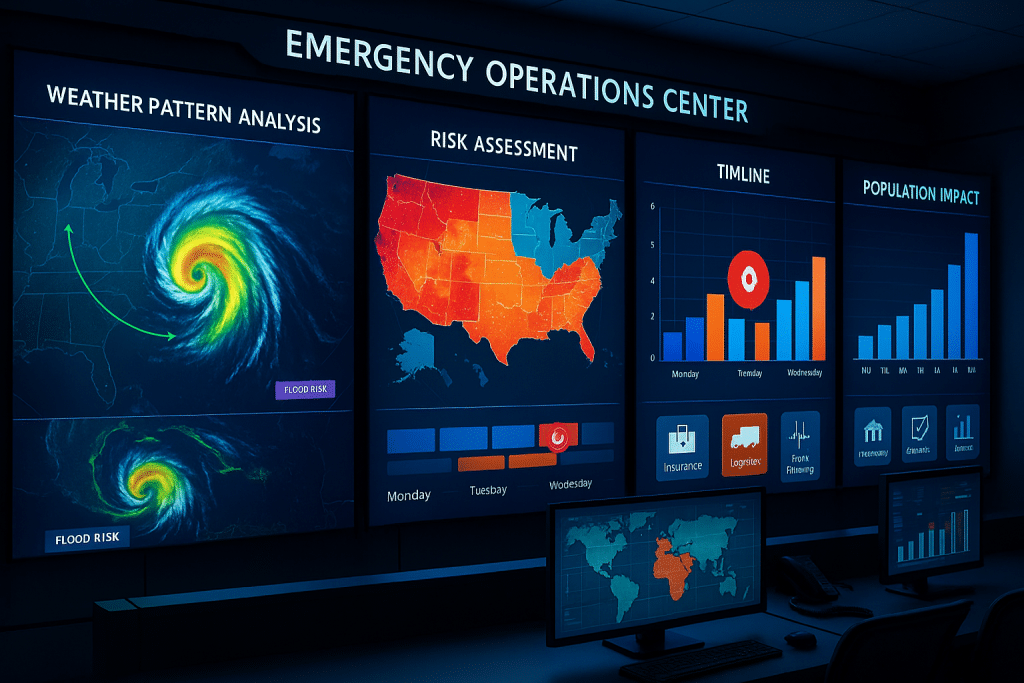
In São Paulo, Brazil, a company called Sipremo is pioneering something that sounds like science fiction: predicting where and when climate disasters will occur—and what type they’ll be—before they happen.
This isn’t fortune telling; it’s sophisticated AI analysis of atmospheric conditions, historical patterns, and real-time data to forecast extreme weather events with unprecedented accuracy. The implications for saving lives and reducing economic damage are enormous.
How Disaster Prediction Works
The AI system analyzes:
- Weather patterns and atmospheric conditions
- Historical disaster data and recurring patterns
- Geographic vulnerabilities and infrastructure weaknesses
- Climate model projections and trend analysis
- Real-time environmental data from sensors and satellites
This comprehensive analysis allows businesses and governments to:
- Prepare communities before disasters strike
- Pre-position emergency resources where they’ll be needed
- Warn vulnerable populations with greater lead time
- Make operational decisions about postponing events or activities
- Reduce economic losses through proactive measures
Sipremo works with industries including insurance, energy, logistics, and sports, where analysis of disaster conditions and air quality factors can inform critical decisions—like whether to delay sporting events, reroute logistics operations, or activate emergency response protocols.
Early Warning Systems Save Lives
The UN Secretary-General’s Early Warnings for All initiative, launched with the goal of protecting everyone on Earth from hazardous weather events by the end of 2027, relies heavily on AI-powered prediction systems.
The World Meteorological Organization emphasizes that AI-driven technologies offer previously unheard-of capabilities to process enormous volumes of data, extract insightful knowledge, and improve predictive models. This means improved modeling and predicting of climate change patterns that help communities and authorities draft effective adaptation and mitigation strategies.
For areas susceptible to specific disasters—like landslides, flooding, or wildfires—AI-generated susceptibility maps help local authorities plan sustainable development measures, reduce risks, and ensure resident safety in vulnerable communities.
“We’re moving from reactive disaster response to proactive disaster prevention,” explains a climate resilience expert. “AI gives us the foresight to protect people before disasters occur, not just help them recover afterward.”
Real-World Applications
The practical applications are already saving lives:
- Hurricane evacuation planning with more accurate landfall predictions
- Flood risk assessment for infrastructure and housing development
- Wildfire spread prediction for firefighting resource allocation
- Agricultural planning to protect crops from extreme weather
- Insurance risk modeling for climate-vulnerable regions
The Bigger Picture: AI’s Climate Impact by the Numbers
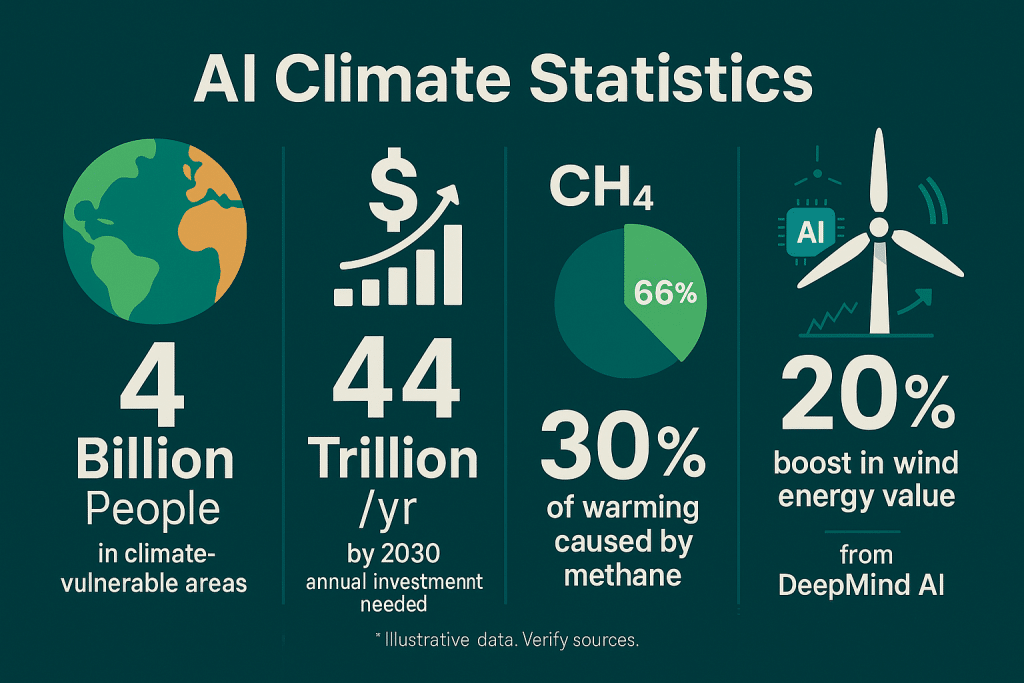
Let’s step back and look at the scale of what we’re discussing. The numbers paint a picture of both challenge and opportunity:
The Challenge
- Nearly 4 billion people already live in areas highly vulnerable to climate change
- $4 trillion in annual investment needed globally by 2030 for climate action
- Global CO2 emissions estimated at 35,000 million tonnes in 2024
- Agriculture accounts for 22% of global greenhouse gas emissions
- Ocean plastic pollution exceeds 170 trillion plastic particles
The AI Opportunity
- 66% of emissions reductions needed for net zero by 2050 can be achieved with technology available today, according to the International Energy Agency
- 20% increase in wind energy economic value achieved by Google DeepMind’s AI optimization
- 60% efficiency boost in ocean plastic removal using AI routing algorithms
- 100x faster analysis of Antarctic iceberg data compared to human researchers
- 86 tonnes of waste recovered per facility that would otherwise hit landfills
According to the World Economic Forum, we’re at a critical juncture. The technology exists, the applications are proven, and the stakes couldn’t be higher. AI isn’t a silver bullet—but it’s proving to be an incredibly powerful tool in our climate action arsenal.
The Path Forward: What We Need to Do Next
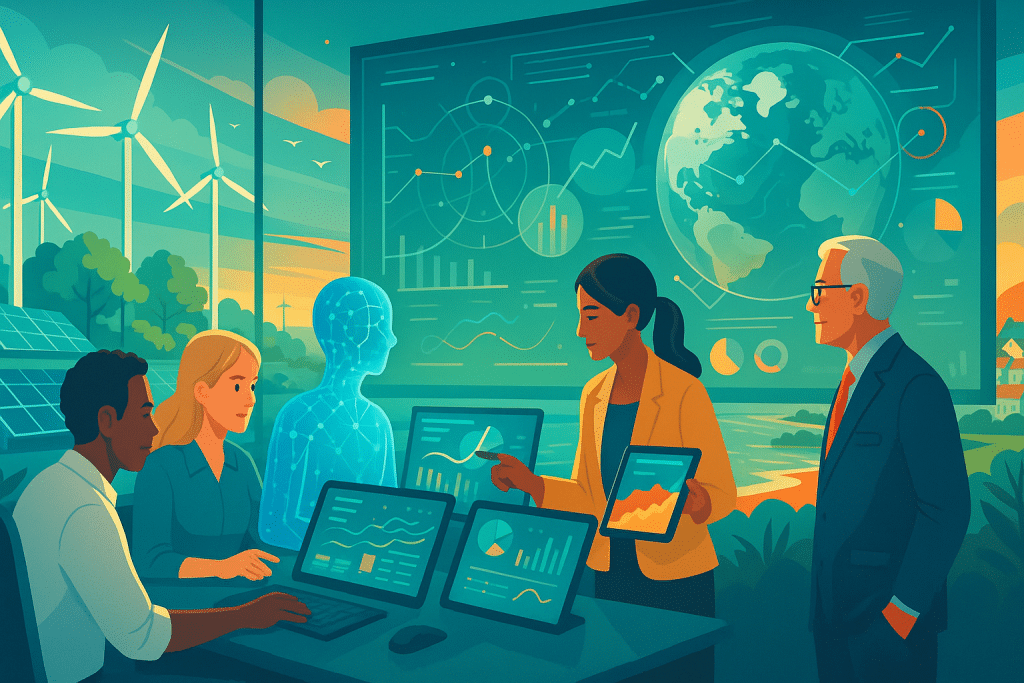
As exciting as these applications are, experts caution that AI alone won’t save us from climate change. Success requires deliberate action across multiple fronts.
Critical Next Steps
Scale Up Infrastructure: Developing nations need access to the digital infrastructure and skills necessary to deploy AI climate solutions. Currently, Africa holds 60% of the world’s best solar resources but received less than 2% of clean energy investments in 2023.
Address the Energy Trade-off: We must acknowledge that AI systems themselves consume significant energy. Data centers account for around 180 million tonnes of CO2 emissions annually. The push toward renewable-powered data centers and energy-efficient algorithms is essential.
Foster Collaboration: Governments, technology companies, and energy sectors must work together. Market forces alone won’t drive AI toward climate action—intentional partnerships and policies are needed.
Invest in Climate-Positive AI: Incentivize investment in AI applications with the highest environmental returns. Not all AI development is equal; we need to prioritize applications that deliver measurable climate benefits.
Ensure Equitable Access: The Global South shouldn’t be left behind. AI’s climate benefits must reach the communities most vulnerable to climate impacts, not just wealthy nations.
Build Trust Through Transparency: For AI climate solutions to gain widespread adoption, we need transparency in how these systems work and assurance that they’re reliable and beneficial.
A Cause for Cautious Optimism
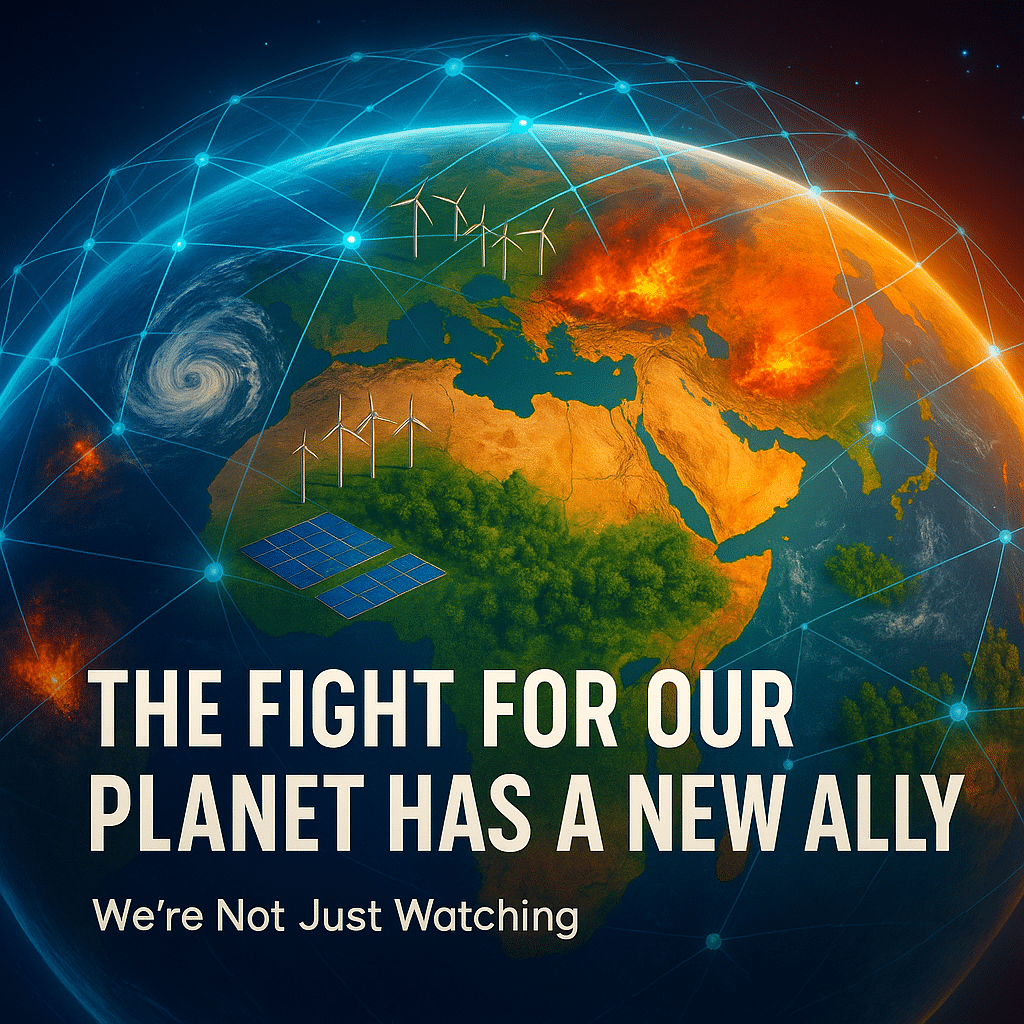
As we navigate what the UN calls humanity’s greatest challenge, stories like these provide something we desperately need: evidence that we’re not powerless against climate change.
AI is helping us see what we couldn’t see before—invisible methane plumes drifting from oil facilities. It’s helping us understand what we couldn’t comprehend—the complex dynamics of melting icebergs and rising seas. It’s helping us do what we couldn’t do before—clean oceans at scale, sort waste perfectly, predict disasters before they strike.
“Transparent climate reporting is a vital enabling tool to build stronger evidence base for more ambitious policies,” according to the UN. AI is making that transparency possible in ways we never imagined.
The climate crisis isn’t solved. We’re still facing rising temperatures, extreme weather, and ecosystem collapse. But we’re no longer just watching it happen. With AI as a tool—combined with renewable energy, policy changes, and human determination—we’re fighting back in surprisingly effective ways.
From 400 miles above Earth to the depths of the ocean, from waste facilities to weather prediction centers, artificial intelligence is becoming an unexpected hero in our climate story. The question isn’t whether AI can help fight climate change—it’s whether we’ll deploy it quickly and equitably enough to make the difference we need.
As Dr. Baidoo from INRA noted during a climate workshop: “AI can be a double-edged sword, but with the right approach, it’s a sword we desperately need in our fight for a livable planet.”
The battle against climate change just got a high-tech ally. And while the fight is far from over, for the first time in a long time, we have reasons to be optimistic about our chances.
This article is based on research and reports from the United Nations, World Economic Forum, International Energy Agency, NASA, and leading climate organizations worldwide. All statistics and applications cited represent real, deployed technologies as of October 2025.
Frequently Asked Questions: AI Fighting Climate Change
How can AI actually help fight climate change when it uses so much energy itself?
This is one of the most important questions we face. It’s true that AI systems, particularly the data centers that power them, consume significant energy—around 180 million tonnes of CO2 emissions annually. However, research shows that when deployed strategically, AI’s climate benefits far outweigh its energy costs.
For example, Google DeepMind’s wind energy optimization alone boosted renewable energy’s economic value by 20%, which translates to massive emissions savings that dwarf the AI system’s own energy use. The key is ensuring AI applications are powered by renewable energy and focused on high-impact climate solutions. Studies project that with aggressive renewable energy policies, AI applications could contribute to a 40% reduction in building energy use and 90% cut in emissions by mid-century—far exceeding AI’s own footprint.
Is AI really making a difference, or is this just hype?
The applications we’ve described are not concepts or pilot projects—they’re deployed, operational systems delivering measurable results right now. The Ocean Cleanup has collected over 29 million kilograms of plastic using AI-powered systems. Greyparrot’s waste AI has tracked 32 billion items and recovers an average of 86 tonnes per facility. Methane detection satellites are actively identifying leaks that operators are fixing. These aren’t promises of future impact; they’re documented, quantifiable results happening today.
That said, AI is a tool, not a magic solution. Its effectiveness depends on how we deploy it, what policies support it, and whether we pair it with other necessary actions like renewable energy adoption and emissions regulations.
Why haven’t we heard more about AI being used for climate change?
While AI for chatbots and consumer applications gets significant media attention, climate applications often happen behind the scenes—in waste facilities, on satellites, in research labs, and in industrial operations. These applications don’t have the same consumer-facing appeal as ChatGPT, but their impact is profound.
Additionally, the intersection of AI and climate is a relatively recent development. Many of these technologies have only reached operational scale in the past 2-3 years. Organizations like Climate Change AI, the UN, and the World Economic Forum are now actively working to raise awareness and accelerate deployment.
Can AI help with climate change adaptation, or just mitigation?
Both! AI excels at helping us both reduce emissions (mitigation) and prepare for climate impacts we can no longer avoid (adaptation):
Mitigation examples: Optimizing renewable energy, detecting methane leaks, improving energy efficiency, reducing waste
Adaptation examples: Predicting extreme weather events, mapping flood risks, planning resilient infrastructure, optimizing water usage in drought-prone areas, helping communities prepare for climate disasters
The UN’s Early Warnings for All initiative, aiming to protect everyone on Earth from climate hazards by 2027, relies heavily on AI for adaptation.
What’s the difference between AI predicting climate change and AI fighting climate change?
Great question! AI does both:
Climate Prediction: AI improves climate models by processing vast datasets to predict future conditions, temperature rises, sea-level changes, and extreme weather patterns. This helps us understand what’s coming.
Climate Action: AI actively helps reduce emissions and remove pollution. This includes optimizing energy systems, detecting leaks, cleaning oceans, improving efficiency, and enabling renewable energy integration.
Think of prediction as the diagnosis and action as the treatment. We need both, and AI contributes to both.
Specific Applications
How does AI detect methane from space when methane is invisible?
Satellites don’t “see” methane the way our eyes see visible light. Instead, they use spectrometers that detect specific wavelengths of infrared radiation. Methane absorbs certain wavelengths, creating a unique spectral signature.
AI comes in by analyzing the massive amounts of data these satellites collect. The algorithms can identify methane’s spectral signature amid countless other atmospheric signals, pinpoint the source location, quantify the emission rate, distinguish between different types of sources, and do all this in near real-time across the entire planet.
Without AI, processing this data would take human analysts years. With AI, it happens in hours or days, enabling rapid response to leaks.
How accurate is the Antarctic iceberg tracking? Can AI really identify icebergs better than humans?
The AI developed by University of Leeds researchers achieved remarkable accuracy—mapping icebergs in one-hundredth of a second with precision comparable to or exceeding human analysis. The key advantages are speed (100x faster than humans), consistency (no fatigue or errors), scale (can process years of satellite data quickly), and capability to work in challenging conditions (distinguishing icebergs from clouds and sea ice).
Human researchers validated the AI’s accuracy by comparing its results against manually analyzed images. The system now handles the bulk of tracking work, freeing scientists to focus on interpreting patterns and implications rather than tedious identification.
Does the waste-sorting AI actually increase recycling rates, or just identify what could be recycled?
Both! The AI doesn’t just identify—it actively improves operations in real-time. Waste facility managers use the data to adjust sorting processes immediately, identify contamination before it ruins batches, optimize equipment settings for different waste streams, train staff on common mistakes, and track performance metrics to continuously improve.
Facilities using Greyparrot’s system report that the 86 tonnes of material identified per facility translates to actual increases in recycling rates because the AI enables operational changes that weren’t possible before. It’s not just data collection; it’s actionable intelligence that changes outcomes.
How is ocean plastic related to climate change?
The connection is stronger than most people realize:
- Production Emissions: Plastic manufacturing accounts for 3.4% of global greenhouse gas emissions
- Degradation: Plastic in oceans releases methane and ethylene as it breaks down
- Ocean Health: Plastic pollution impairs the ocean’s ability to absorb CO2 from the atmosphere
- Ecosystem Impact: Disrupted marine ecosystems can’t perform their natural carbon cycling functions
- Microplastics: These enter the food chain, affecting ocean biology that plays a role in carbon regulation
Cleaning ocean plastic isn’t just about wildlife protection (though that matters enormously)—it’s about preserving the ocean’s climate regulation capabilities.
Can AI really predict disasters before they happen?
AI doesn’t predict the future in a mystical sense—it analyzes patterns, current conditions, and massive datasets to forecast high-probability events with increasing accuracy. For weather-related disasters like hurricanes, the AI analyzes atmospheric pressure, temperature, moisture, wind patterns, historical data, and ocean conditions to predict formation, path, intensity, and timing with greater accuracy and lead time than traditional methods.
For slower-onset disasters like droughts or flooding, AI identifies risk factors and vulnerabilities before crisis points are reached. The predictions aren’t perfect, but they’re accurate enough to save lives and reduce damage when combined with proper warning systems and emergency response.
Implementation and Impact
Are developing countries able to access these AI climate solutions?
This is a critical equity issue. Currently, access is uneven. Challenges include limited digital infrastructure, data gaps and collection capabilities, lack of technical expertise, financial constraints, and limited awareness of available solutions.
However, organizations are working to address this. The UN emphasizes that AI’s benefits must reach the Global South—the communities most vulnerable to climate impacts. Initiatives include free, open-source AI tools (like NASA and IBM’s climate models), capacity-building programs, international partnerships, and climate finance specifically for technology access.
Africa, which holds 60% of the world’s best solar resources but received less than 2% of clean energy investments in 2023, represents both the challenge and the opportunity. Ensuring equitable access to AI climate solutions isn’t just ethical—it’s essential for global climate action success.
What can individuals do to support AI climate applications?
While these are largely institutional technologies, individuals can:
- Support Organizations: Donate to or volunteer with groups like The Ocean Cleanup or Climate Change AI
- Advocate for Policy: Push for government investment in AI climate solutions and renewable-powered data centers
- Choose Conscious Companies: Support businesses using AI for sustainability
- Spread Awareness: Share information about these applications to build public support
- Demand Transparency: Expect companies to disclose their AI energy use and climate impact
- Support Research: If you have technical skills, contribute to open-source climate AI projects
Additionally, understanding these solutions helps us be informed voters and consumers who can influence how AI develops and gets deployed.
How long until these AI solutions make a significant global impact?
Some are already making significant impact—The Ocean Cleanup has removed 29 million kg of plastic, methane detection is preventing thousands of tonnes of emissions, and waste AI is diverting material from landfills daily. These aren’t future promises; they’re current realities.
For broader, transformational impact, timelines vary:
- Near-term (1-3 years): Scaling existing applications, expanding to more locations, improving efficiency of current systems
- Medium-term (3-7 years): New AI climate applications becoming operational, integration across industries, policy frameworks supporting deployment
- Long-term (7-15 years): AI as standard infrastructure for climate action, comprehensive monitoring systems, automated optimization across energy systems
The key constraint isn’t technology—it’s deployment speed, which depends on funding, policy support, infrastructure development, and international cooperation.
Are there any risks to relying on AI for climate solutions?
Yes, and it’s important to acknowledge them:
- Energy Consumption: AI systems need power—we must ensure renewable sources
- Data Privacy: Environmental monitoring involves collecting data that might have privacy implications
- Algorithmic Bias: AI trained on incomplete data might miss vulnerable communities
- Over-reliance: AI shouldn’t replace other necessary actions like policy changes and behavior modifications
- Access Inequality: Benefits might accrue to wealthy nations while vulnerable regions lag behind
- Technical Failures: Systems can malfunction, leading to missed detections or wrong predictions
- False Confidence: Over-trusting AI might lead to complacency about human oversight
These risks are manageable through proper regulation, transparency, human oversight, ethical frameworks, and equitable deployment—but they require active attention.
The Bigger Picture
Is AI the “silver bullet” for climate change?
No, and experts are clear about this. AI is a powerful tool—perhaps one of the most powerful we have—but it’s not sufficient on its own. Solving climate change requires a comprehensive approach that includes renewable energy transition, reducing consumption, protecting natural ecosystems, policy and regulatory changes, international cooperation, behavior modification, and yes, smart technology deployment including AI.
Think of AI as a force multiplier. It makes other climate solutions more effective, faster, and scalable. But it doesn’t replace the need for those other solutions.
How does AI climate action compare to other climate solutions in terms of impact?
It’s difficult to make direct comparisons because AI often enables other solutions rather than replacing them. For example:
- Renewable Energy: AI doesn’t generate clean energy, but it makes renewable energy 20% more valuable through optimization
- Carbon Capture: AI doesn’t capture carbon, but it can optimize where and how capture systems operate
- Conservation: AI doesn’t protect forests, but it can monitor deforestation in real-time at scales humans can’t match
The International Energy Agency notes that 66% of the emissions reductions we need for net zero by 2050 can be achieved with currently available technology—and AI helps us deploy and optimize much of that technology more effectively.
What needs to happen for AI to reach its full climate potential?
Experts identify several critical needs:
- Infrastructure: Developing nations need digital infrastructure and technical capacity
- Policy Support: Governments must incentivize climate-positive AI applications
- Investment: Funding should flow to highest-impact environmental applications
- Energy: Data centers must run on renewable power
- Collaboration: Technology, energy, and government sectors must work together
- Standards: We need frameworks for measuring and verifying AI’s climate impact
- Equity: Global South must benefit, not be left behind
- Transparency: Public trust requires open, understandable AI systems
None of these are technological problems—they’re human and institutional challenges. The technology is largely ready; our systems and structures need to catch up.
What’s the timeline for AI making a real dent in climate change?
We’re already seeing measurable impacts, but the scale matters. According to current projections:
- By 2027: UN’s Early Warnings for All aims to protect everyone from climate hazards using AI-powered systems
- By 2030: $4 trillion in annual climate investment needed—AI can help optimize this spending
- By 2040: The Ocean Cleanup aims to remove 90% of floating ocean plastic using AI
- By 2050: Net zero emissions goals for many countries—AI will be critical for achieving this
These aren’t guaranteed outcomes—they’re goals that AI makes more achievable. Success depends on deployment speed, which is ultimately limited by human decision-making, not technology readiness.
Where can I learn more or get involved?
Several excellent resources exist for those interested in diving deeper:
Organizations:
- Climate Change AI (climatechange.ai) – research and community
- The Ocean Cleanup (theoceancleanup.com) – ocean plastic removal
- UN Climate Change (unfccc.int) – policy and frameworks
Research:
- Google DeepMind’s climate work
- NASA’s AI for Earth programs
- MIT’s climate research initiatives
Getting Involved:
- Climate Change AI workshops and conferences
- Open-source climate AI projects on GitHub
- Local climate action groups incorporating technology
- Online courses on AI for climate (Coursera, edX)
Staying Informed:
- World Economic Forum climate reports
- International Energy Agency AI analysis
- UN Environment Programme updates
The field is rapidly evolving, so staying current is important. Following these organizations’ newsletters and announcements keeps you informed of breakthroughs and opportunities to contribute.
Still Have Questions?
The intersection of AI and climate change is a rapidly developing field. New applications emerge regularly, and our understanding of both the potential and the limitations continues to evolve.
What’s clear is this: AI has moved from theoretical possibility to operational reality in climate action. From space to the ocean depths, from waste facilities to disaster command centers, artificial intelligence is helping us see more clearly, act more effectively, and respond more rapidly to the climate crisis.
We’re not just watching climate change unfold anymore. We’re fighting it—with every tool we can muster, including our most advanced technology.
The future of our planet depends on the actions we take now. Understanding how AI contributes to climate solutions helps us make informed decisions about technology, policy, and our collective response to humanity’s greatest challenge.



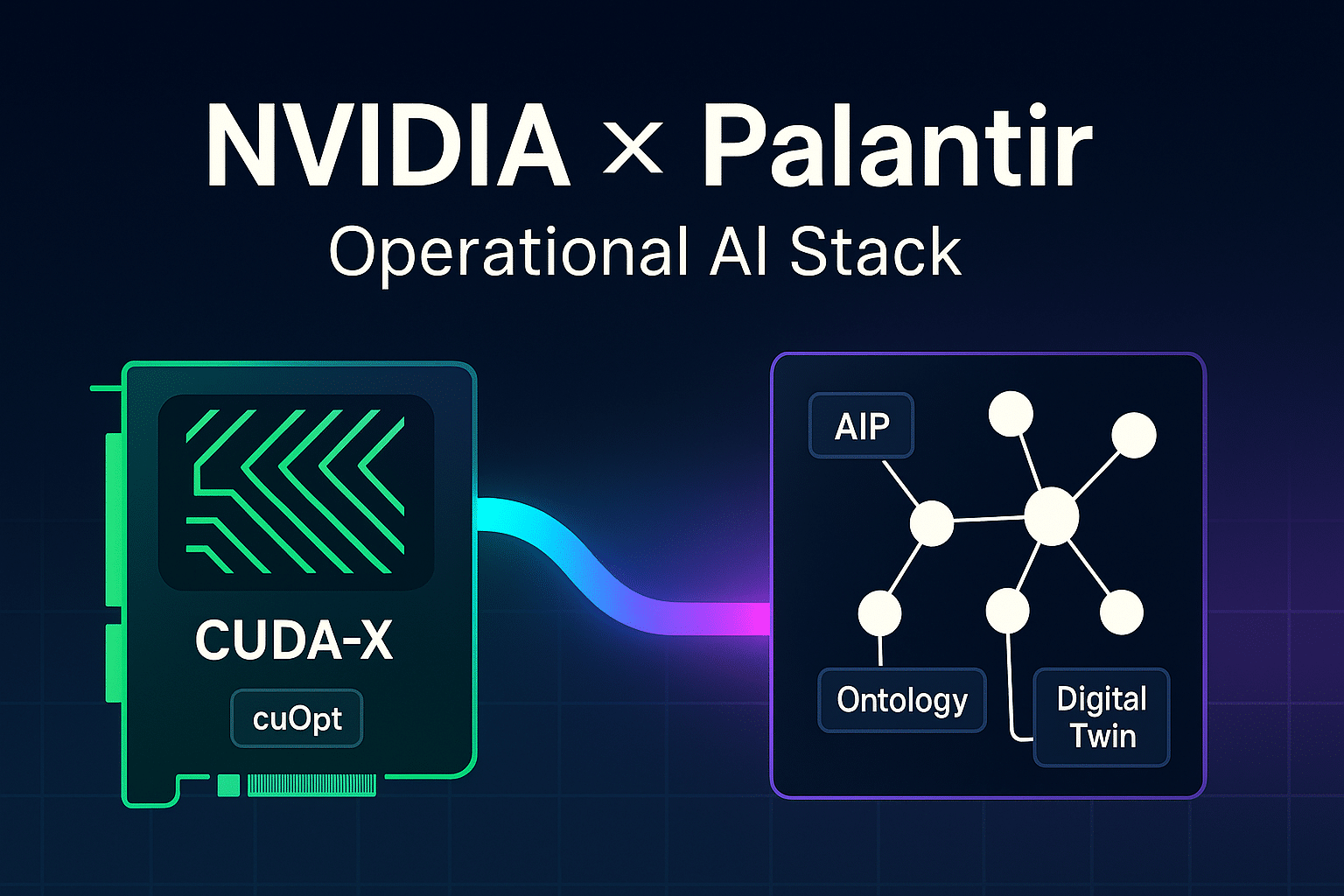
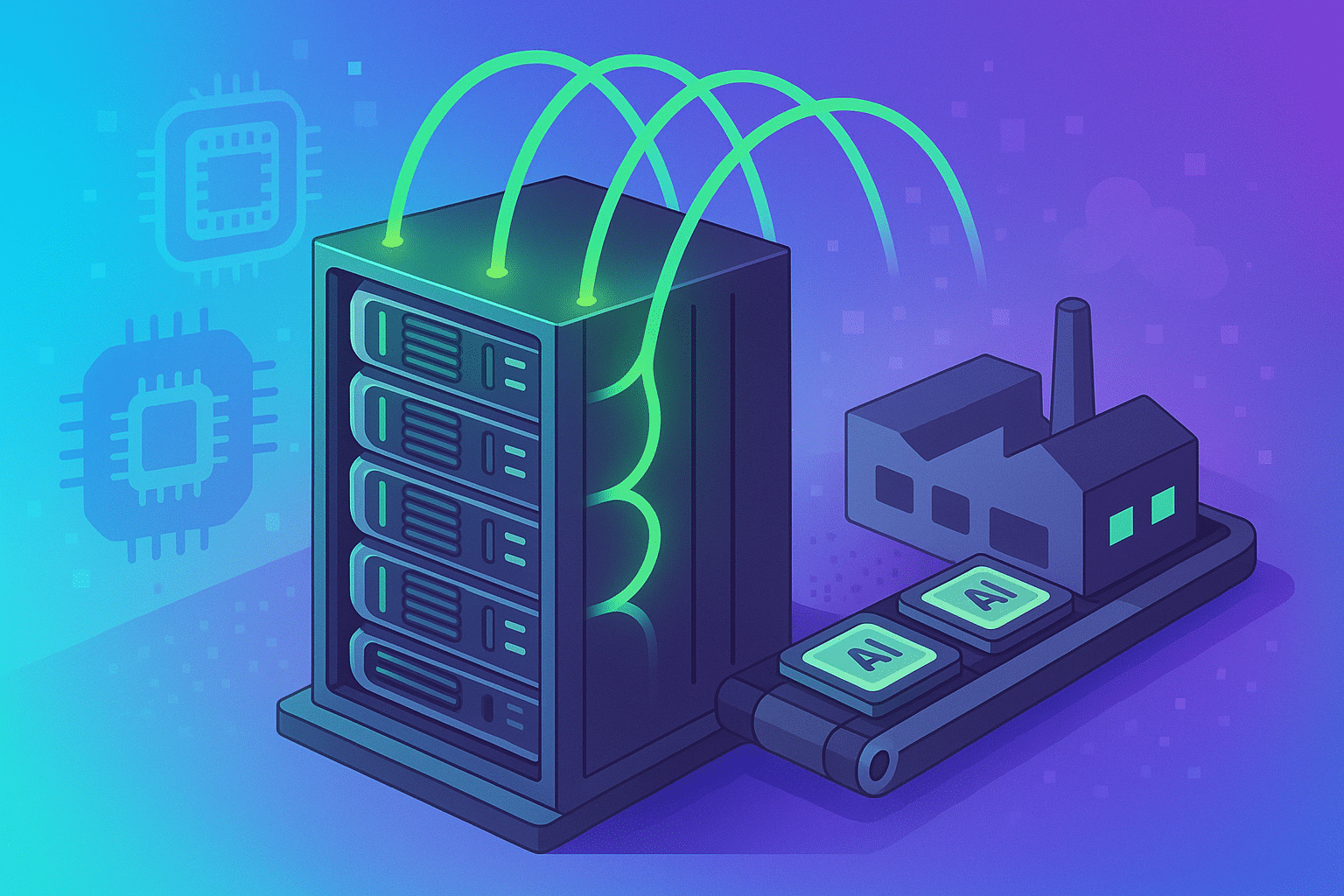
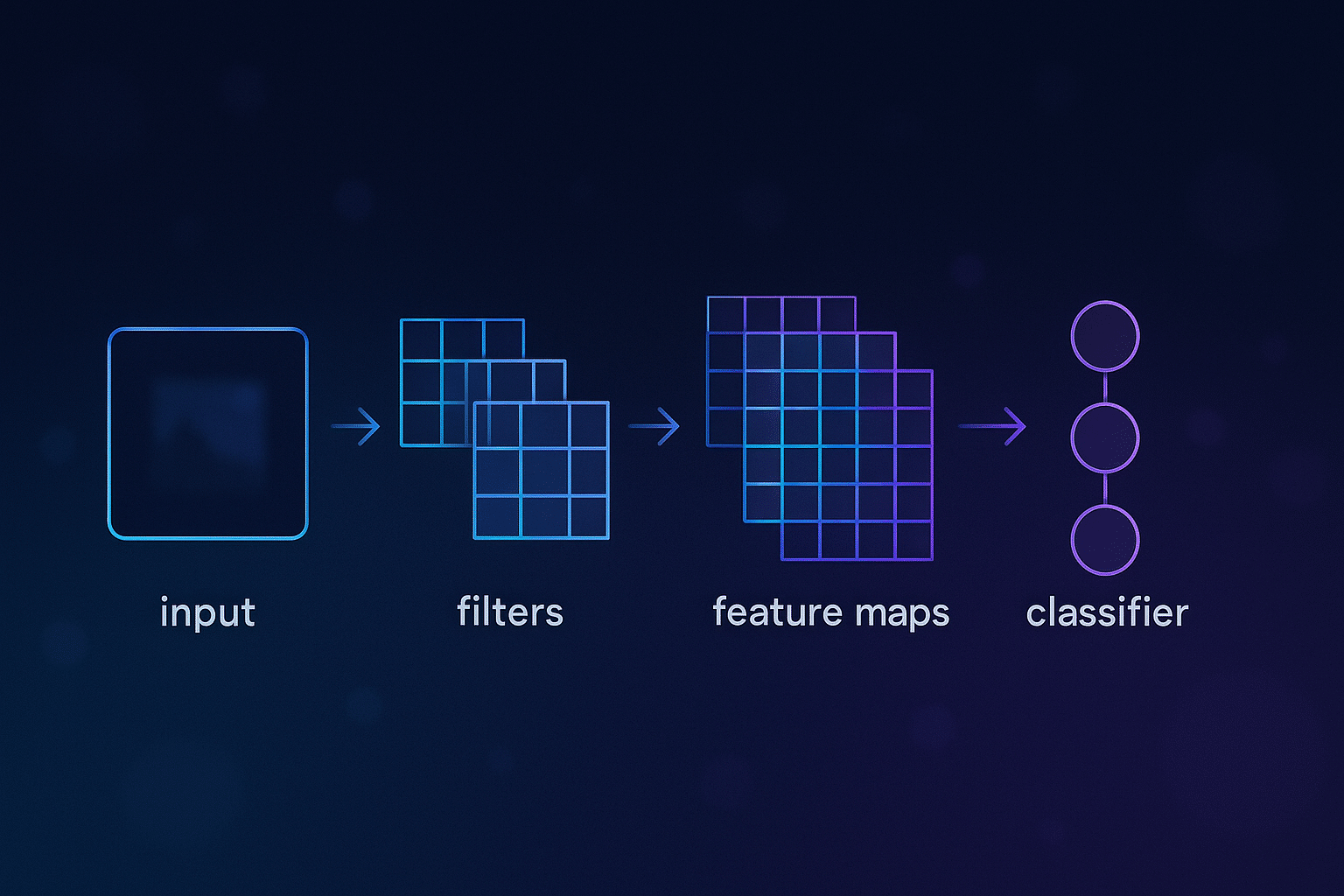
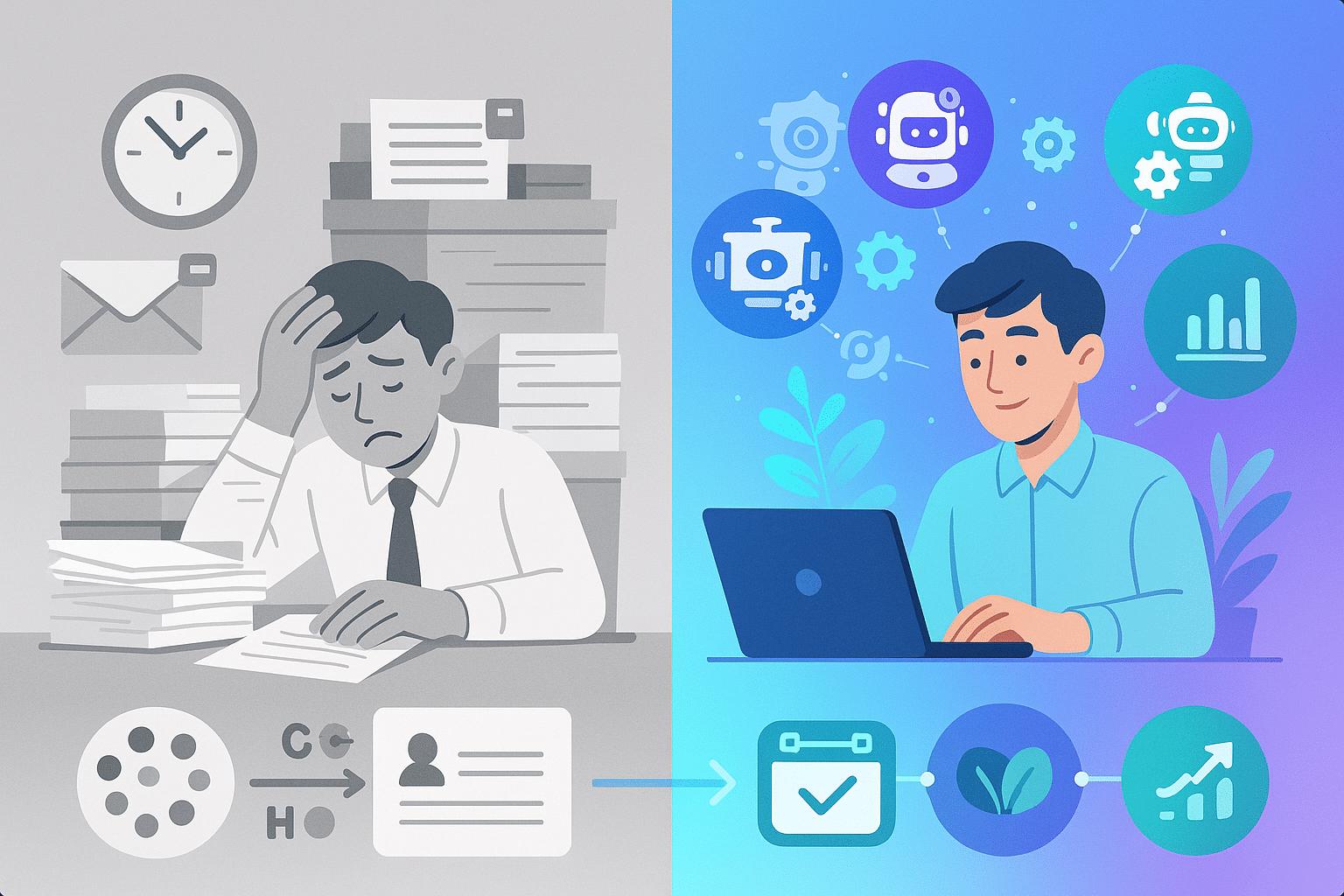
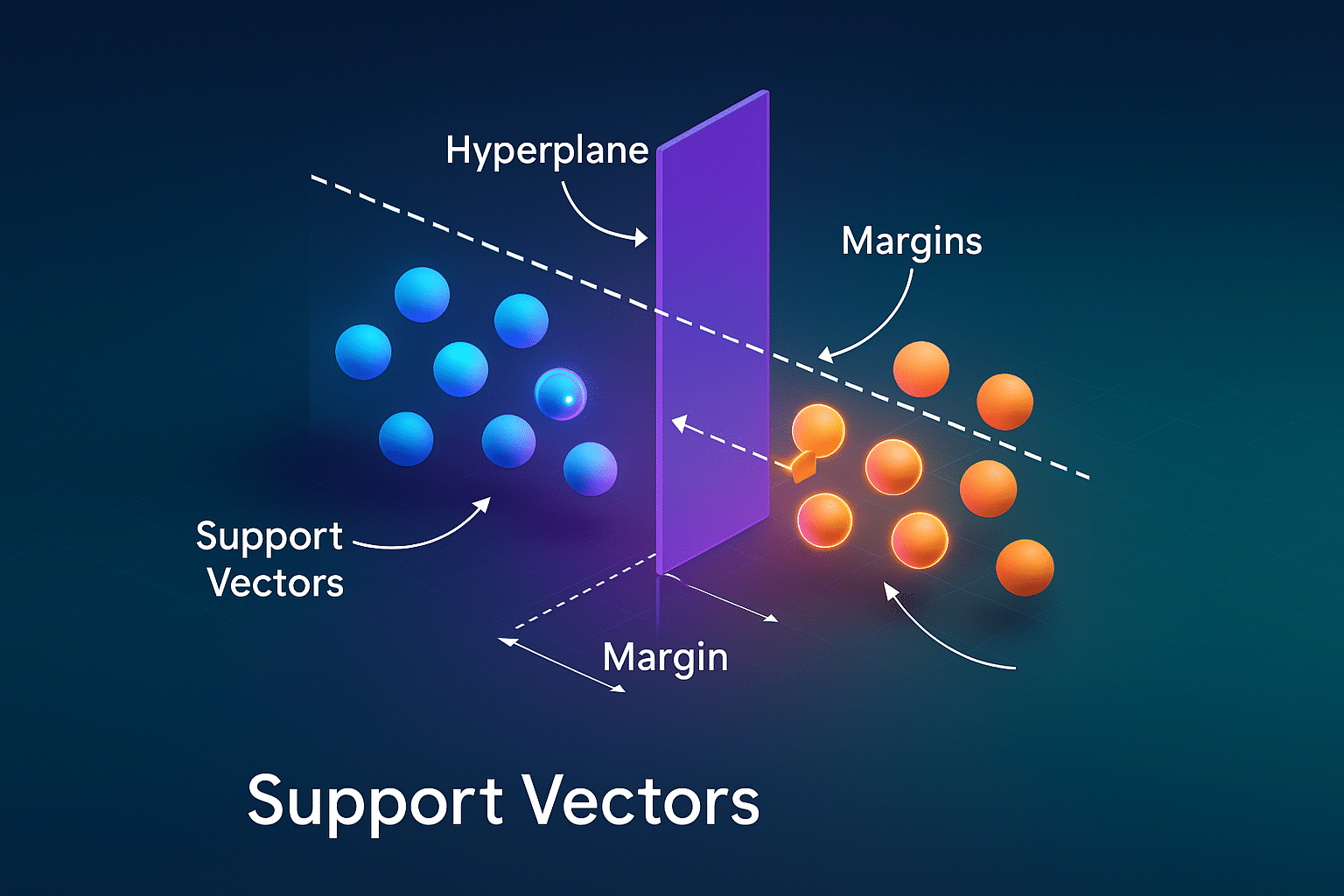
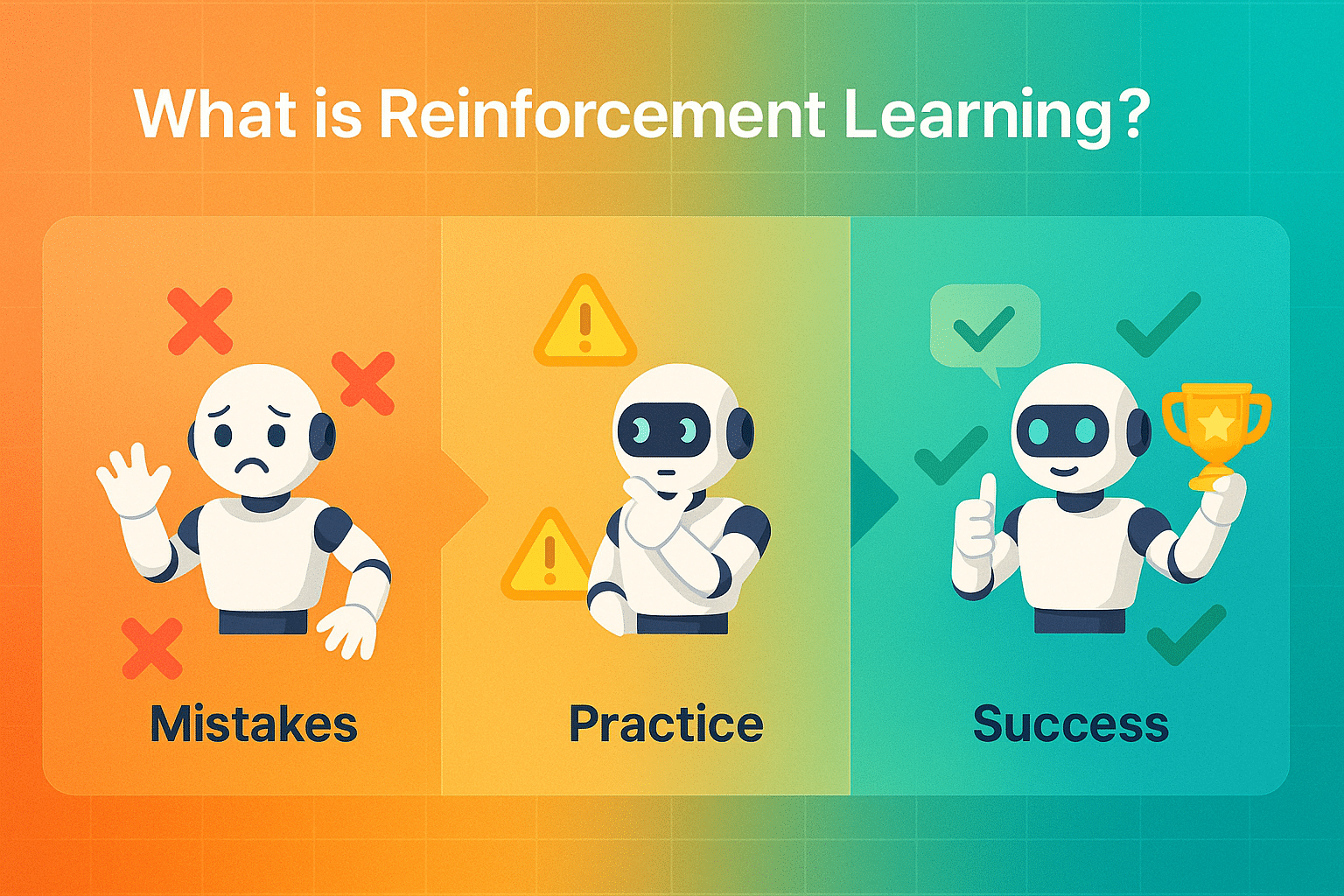
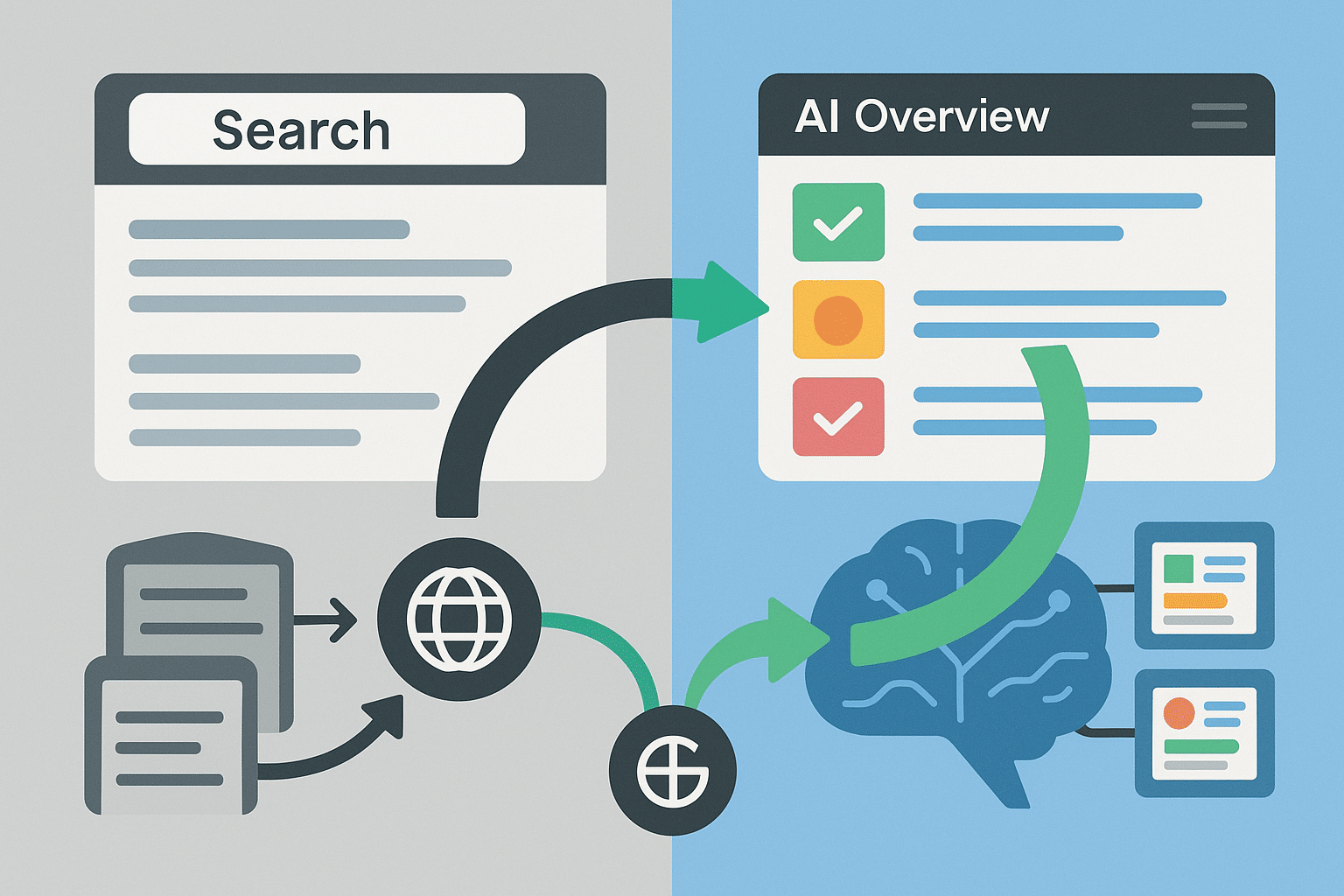
Leave a Reply